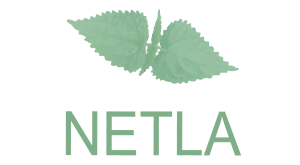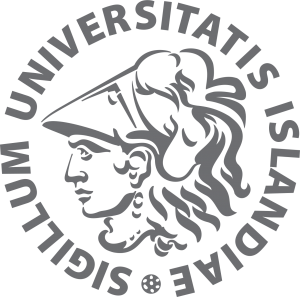Ritrýning og ákvörðun um birtingu
Birting greina ræðst annars vegar af fræðilegum efnistökum og gildi rannsókna og hins vegar þeirri spurningu hvort greinar eigi erindi til þeirra sem sinna eða hafa áhuga á uppeldis- og menntamálum.
Ákvörðun ritstjórnar um birtingu ritrýndra greina byggist á faglegri umsögn minnst tveggja sérfróðra ritrýna og viðbrögðum höfunda við ábendingum og athugasemdum. Fullrar nafnleyndar er gætt við ritrýni og þess gætt að annar eða báðir ritrýnar hafi doktorspróf. Ennfremur er leitast við að tryggja að ritrýnar hafi ólíka sýn á viðfangsefnið.
Umsagnir ritrýna um greinar eru sendar höfundum og fylgir jafnan ákvörðun um birtingu eða synjun. Greinar geta verið samþykktar með fyrirvara um að brugðist sé við faglegum ábendingum. Greinarhöfundar senda þá greinina inn aftur með breytingum og gera í fylgibréfi grein fyrir viðbrögðum sínum við umsögnum ritrýna. Grein er þá aftur lesin yfir og oft sendar nýjar ábendingar eða fyrri athugasemdir ítrekaðar áður en greinin hlýtur endanlegt samþykki. Greinum sem ekki standast kröfur um framsetningu og efnistök er hafnað.
Meginregla er að greinar hafi ekki birst annars staðar. Þó má birta þýðingar á áður birtum greinum ef getið er um fyrri birtingu á óyggjandi hátt. Höfundum ber að geta þess ef greinin er byggð á prófritgerð höfunda, ef byggt er á samvinnu við aðra eða ef vinnan við verkefnið hefur hlotið styrki. Fyrsti höfundur greinar er talinn aðalhöfundur og ber ábyrgð á samskiptum við ritstjóra og væntanlega lesendur.
Ritrýndar greinar eru flokkaðar sérstaklega í yfirlitum Netlu og auðkenndar á eftirfarandi hátt: Ritrýnd grein birt [dagsetning]. Aðrar greinar eru að jafnaði rýndar af einum ritrýni en lúta að öðru leyti sömu ritstjórn og ritrýndar greinar. Þær falla í flokk ritstýrðra greina í yfirlitum Netlu og eru auðkenndar á eftirfarandi hátt: Grein birt [dagsetning].
Í lok árs senda ritstjórar öllum ritrýnum þakkarbréf fyrir vinnu sína og má nota þau til staðfestingar á vinnuframlagi ritrýna þegar það á við.
Kröfur til höfunda um frágang greina
Vinsamlegast farið yfir handrit áður en þeim er skilað í sniðmáti með hliðsjón af þessum gátlista:
- Höfundar ritrýndra greina skila tveimur handritum til ritstjóra Netlu, öðru fullbúnu og hinu án allra persónugreinanlegra upplýsinga.
- Ritrýndar greinar í Netlu ættu að vera á bilinu 6 til 10 þúsund orð, að heimildaskrá og íslensku ágripi meðtöldum, en án ágripi á ensku og upplýsinga um höfunda.
- Gerðar eru þær kröfur til höfunda að þeir taki mið af viðteknum venjum um fræðilega framsetningu, vísindaleg vinnubrögð og vandaðan frágang. Miðað er við reglur APA um framsetningu tilvitnana, tilvísana og heimildaskrár. Íslenskar leiðbeiningar um þær má finna á vefsetri Ritvers á Menntavísindasviði á slóðinni https://ritver.hi.is/is. Einnig er bent á Handbók um ritun og frágang eftir Ingibjörgu Axelsdóttur og Þórunni Blöndal.
- Ef vitnað er í aðalnámskrá fyrir skyldunám: Mennta- og menningarmálaráðuneytið. (2013). Aðalnámskrá grunnskóla 2011: Almennur hluti. Greinasvið 2013. [2]. Höfundur.
- Ef vitnað er í aðalnámskrá framhaldsskóla: Mennta- og menningarmálaráðuneytið. (2012). Aðalnámskrá framhaldsskóla 2011: Almennur hluti. Höfundur.
- Ritrýndum greinum skal fylgja 600–800 orða ágrip á ensku ásamt heiti greinar á ensku. Ágrip á íslensku eru styttri eða á bilinu 200–300 orð. Þá skulu fylgja tillögur að fjórum til sex efnisorðum á íslensku og ensku. Ágrip ritstýrðra greina ættu að vera samhljóða á íslensku og ensku og á bilinu 200-300 orð að meðtalinni einni lokamálsgrein um höfund eða höfunda.
- Ritrýndri grein eiga að fylgja upplýsingar um höfunda á íslensku og ensku, um 60 til 70 orð á hvoru máli. Þar skal tilgreina menntun höfunda og núverandi starf. Einnig skal geta um rannsóknarsvið höfunda og tölvupóstfang. Með upplýsingum um höfunda fylgja heiti þeirrar stofnunar sem þeir starfa hjá á íslensku og ensku. Upplýsingar um höfunda skulu berast í sérstöku skjali.
- Gera þarf grein fyrir höfundum mynda og uppruna annarra gagna eftir því sem við á. Ef mikið er af myndefni eða öðru hliðstæðu efni má taka saman sérstaka skrá með upplýsingum um uppruna.
- Allar greinar fara í yfirlestur á íslensku, ensku og fyrir APA-heimildakerfið, fyrir birtingu. Þrátt fyrir þetta er ætlast til að höfundar vandi málfar í greinum sínum og lesi sérstaklega yfir vísanir í heimilidir og heimildaskráningu áður en þeir senda inn grein til birtingar.
- Ritstjórn áskilur sér rétt til að breyta orðalagi eða stafsetningu við lokafrágang. Höfundur ber endanlega ábyrgð á birtri grein og hægt er að gera lagfæringar ef í ljós koma villur eða álitamál eftir að grein er birt.
- Höfundar ritstýrðra greina þurfa að hafa ofangreind viðmið í huga en hafa annars, í samráði við ritstjóra, frjálsari hendur um lengd, form og efnistök.
Frágangur greina í sniðmáti
Handritum greina skal skila í sniðmáti Netlu
- Þess skal gætt að leturfletir og stílsnið, sem þar er gert ráð fyrir, haldi sér. Sniðmátið er ritvinnsluskjal úr Word með textum í viðeigandi stílum. Hægt er að lýsa upp einstök dæmi um texta og líma inn viðeigandi texta án útlitseinkenna úr upprunaskjali (t.d. með því að nota skipunina Paste Special > Unformatted text), láta upprunatexta taka á sig viðeigandi útlit textans sem fyrir er við flutning á milli skjala. Önnur leið er að flytja inn greinina í heild án allra útlitseinkenna og bregða svo á textann viðeigandi stílum í sniðmátinu. Í báðum tilvikum má fá hreinan texta og rétta stíla á nöfn höfunda, heiti greinar, útdrætti, fyrirsagnir, meginmál, inndregnar tilvitnanir og myndatexta.
- Í skjalinu eru dæmi um uppsetningu á myndum og töflum sem styðjast má við. Töflur, myndir og línurit skal merkja sérstaklega með hlaupandi númerum (t.d. Mynd 3, Tafla 2). Myndatexti eða fyrirsögn töflu kemur fyrir ofan myndina eða efst í töflunni. Koma má athugasemdum fyrir undir töflu eins og sýnt er í sniðmáti. Þegar vísað er til myndar eða töflu er beitt skáletri (t.d. sjá Mynd 3 og Töflu 2).
- Höfundar skulu vanda málfar, velja málsnið við hæfi og fara að opinberum reglum um stafsetningu og greinarmerki. Benda má á upplýsingar á vefsetri Stofnunar Árna Magnússonar í íslenskum fræðum, sjá http://www.arnastofnun.is/is/malfarsradgjof og upplýsingar sem Eiríkur Rögnvaldsson hefur birt á slóðinni https://notendur.hi.is/eirikur/ritun.htm.
- Skýr kaflaskipting stuðlar að læsileika greinar. Höfundar ættu skipta greinum í kafla og undirkafla eftir því sem við á og gefa þeim heiti. Kaflar eru almennt ekki tölusettir. Í upphafi fer vel á að lýsa meginefni greinar lesendum til glöggvunar. Gera þarf skipulega grein fyrir bakgrunni rannsókna þegar um þær er að ræða, hugmyndum sem þar búa að baki, aðferð og niðurstöðum. Samantekt og ályktunum þarf að gera góð skil undir greinarlok.
- Hægt er að koma fyrir viðbótarefni eða skýringum í neðanmálsgrein en því ber að stilla í hóf eins og mögulegt er. Stundum er komið fyrir þökkum eða athugasemdum aftan við efni greinar og á undan heimildaskrá.
- Leturauðkennum skal stilla í hóf. Skáletri er beitt til að draga fram heiti bóka, tímarita eða efniskafla. Skáletur má líka nota þegar hugtak er kynnt í texta eða fyrst nefnt eða til áherslu þegar svo ber undir. Því hefur einnig verið beitt á orð sem gefa merkingu til kynna og erlend orð sem oft eru birt til skýringar eða upplýsingar í svigum. Einnig til að vísa á mynd eða töflu (t.d. sjá Mynd 3 og Töflu 2).
- Tilvitnunarmerki skal nota á eftirfarandi hátt:
Tvöföld tilvitnunarmerki eru notuð til að afmarka stuttar, orðréttar tilvitnanir (stundum er miðað við 25 orð eða minna), annars er tilvitnun dregin inn og þá eru ekki notuð tilvitnunarmerki. Merkin geta líka afmarkað merkingu eða beina ræðu. Í íslensku opnast merkin niðri en lokast uppi, fyrst niðri við línu og svo ofan til. Þau snúa eins og hér er sýnt („dæmi“).
Samkvæmt reglum má nota einföld merki í sömu stöðu og tvöföld merki til að afmarka merkingu eða beina ræðu. Einföldum gæsalöppum er reyndar stundum beitt í efst í línu beggja vegna eins og hér er sýnt (‘dæmi’) og þá til að afmarka merkingu.
- Ef höfundar þurfa að nota sértákn, svo sem tákn fyrir hljóðritun eða annað af því tagi, má auðkenna þau með lit til að auðvelda eftirfylgni og lokafrágang.

 Háteigsvegur v/Stakkahlíð
Háteigsvegur v/Stakkahlíð